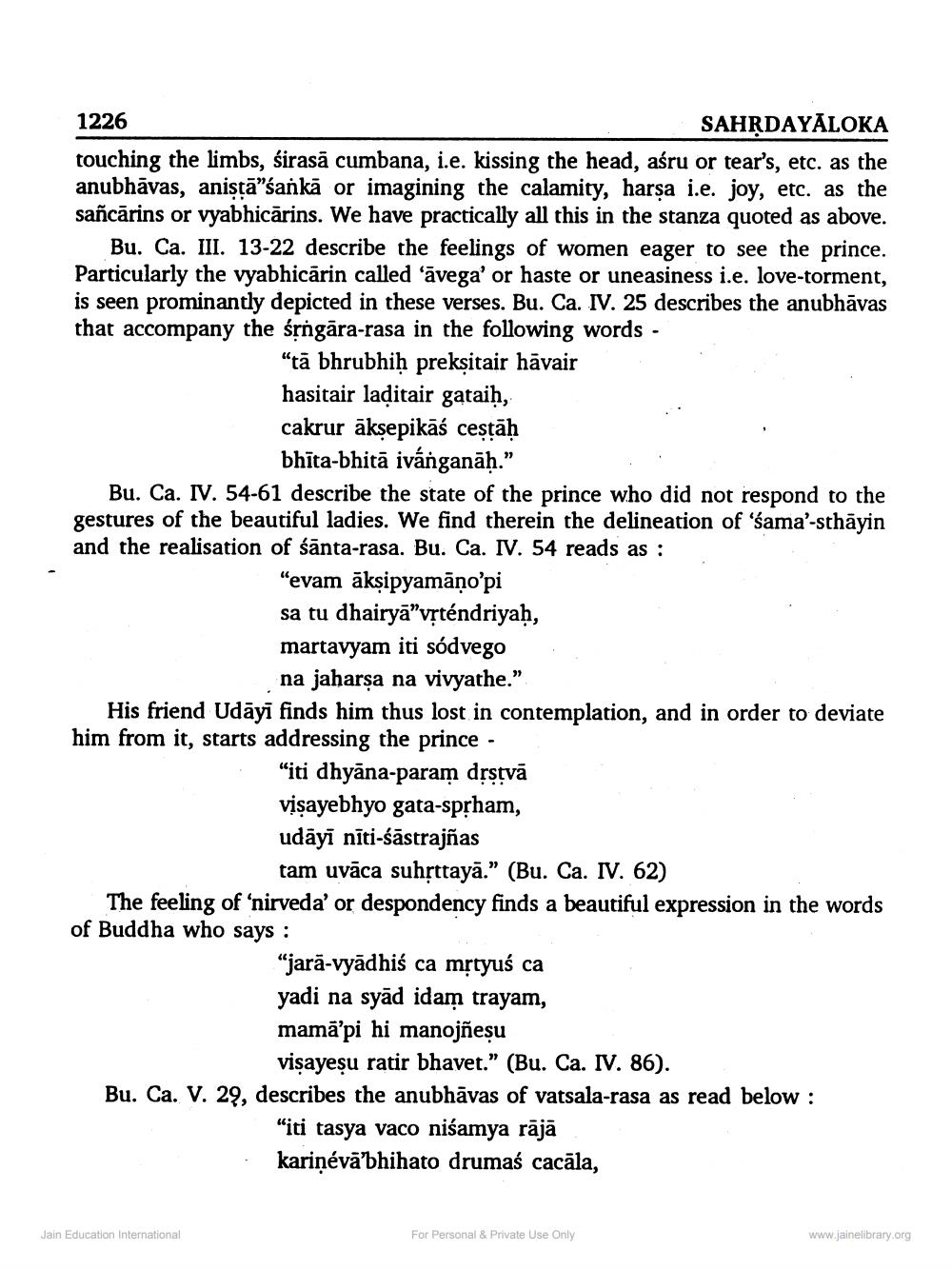________________
1226
SAHRDAYĀLOKA touching the limbs, sirasa cumbana, i.e. kissing the head, aśru or tear's, etc. as the anubhāvas, anistā"sankā or imagining the calamity, harsa i.e. joy, etc. as the sañcarins or vyabhicārins. We have practically all this in the stanza quoted as above.
Bu. Ca. III. 13-22 describe the feelings of women eager to see the prince. Particularly the vyabhicărin called 'āvega' or haste or uneasiness i.e. love-torment, is seen prominantly depicted in these verses. Bu. Ca. IV. 25 describes the anubhāvas that accompany the śộngāra-rasa in the following words
"tā bhrubhiḥ prekşitair hāvair hasitair laditair gataiḥ, cakrur aksepikāś cestāḥ
bhīta-bhitā ivánganāḥ.” Bu. Ca. IV. 54-61 describe the state of the prince who did not respond to the gestures of the beautiful ladies. We find therein the delineation of 'sama'-sthāyin and the realisation of śānta-rasa. Bu. Ca. IV. 54 reads as :
"evam āksipyamāņo'pi sa tu dhairyā”vșténdriyaḥ, martavyam iti sódvego
na jaharsa na vivyathe." His friend Udāyī finds him thus lost in contemplation, and in order to deviate him from it, starts addressing the prince -
“iti dhyāna-param drstvā visayebhyo gata-sprham, udāyī nīti-śāstrajñas
tam uvāca suhsttayā.” (Bu. Ca. IV. 62) The feeling of 'nirveda' or despondency finds a beautiful expression in the words of Buddha who says:
"jarā-vyādhiś ca mộtyuś ca yadi na syād idam trayam, mamā’pi hi manojñeșu
vișayeșu ratir bhavet.” (Bu. Ca. IV. 86). Bu. Ca. V. 29, describes the anubhāvas of vatsala-rasa as read below :
"iti tasya vaco nisamya rājā • kariņévā’bhihato drumaś cacāla,
Jain Education International
For Personal & Private Use Only
www.jainelibrary.org




